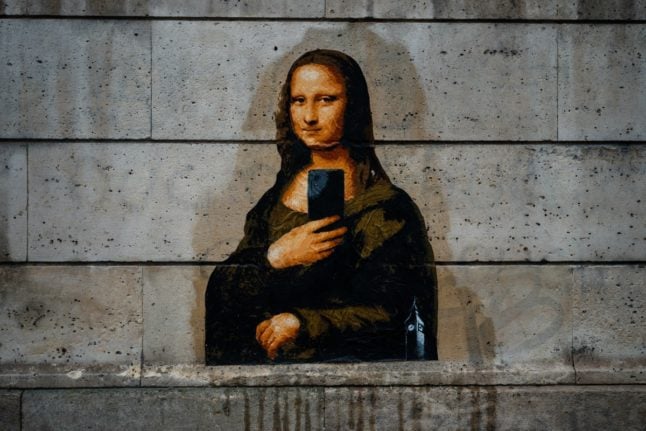“At that time, it was difficult to access your own data, so I had to copy and paste incessantly,” Meunier told AFP in her small gallery in central Paris.
Sixteen years later, things have changed and anyone can use Google’s TakeOut service to download their entire browsing history, which is stored on its servers, though it can take hours or even days to download it all.
Meunier has already published three volumes of her Google searches, and has recently opened an exhibition in Paris in which she has papered the walls of her gallery with those searches.
A digital artist and pioneer of using NFTs (digital certificates, often linked to online art), she is aware that the searches make for dull reading.
“It’s very, very boring,” she said. “Mainly because everyone’s life is pretty boring.”
But the project aims to draw attention to the vast reams of data being stored about each of us on the servers of tech giants — and which they use to make billions of dollars from advertisers.
“If everyone started releasing their data publicly, bit by bit, you could destroy the value that those companies are built on,” she said.
Meunier is an avid collector of NFTs, which had a boom in 2020 and 2021 but have seen their value collapse along with the price of cryptocurrencies in recent months.
The peak came in March 2021 when digital artist Beeple auctioned a work for $69.3 million, the third-highest figure in history for a living artist.
The NFT market saw a 77-percent drop in the third quarter of the year — a net loss of some $450 million, according to specialist site NonFungible.
That doesn’t bother Meunier. “The speculation only benefitted a certain class of artists,” she said.
Meunier still sees NFTs as a useful form of support for artists, especially since they allow them to receive a commission each time their work is resold — which has never been possible in the art market before.
According to NonFungible, however, resales were down 84 percent in the second quarter, and some platforms such as LooksRare said they would no longer insist on commissions to artists.
“The fall is noticeable, of course,” said Meunier. “But I continue collecting and advocating for them.”




 Please whitelist us to continue reading.
Please whitelist us to continue reading.
Member comments